#joseph mary plunkett
Text
#OTD in 1916 – James Connolly vanished for a three-day meeting with the IRB military council where they agreed upon joint plans for an insurrection on Easter Sunday.
A secret meeting between Pádraig Pearse and James Connolly held over three days from 19 January 1916, where the outcome is that Connolly commits the Irish Citizen Army to join with the Irish Republican Brotherhood (IRB) and the date for the Rising is agreed.
In early January 1916, and in high anxiety that Dublin Castle would imminently arrest the leadership of those plotting a rebellion, Connolly…

View On WordPress
#1916 Easter Rising#Éamon Ceannt#Dublin#Dublin Castle#England#Eoin MacNeil#Ireland#Irish Citizen Army (ICA)#Irish Republican Brotherhood (IRB)#James Connolly#Joseph Mary Plunkett#Padraig Pearse#Séan Mac Diarmada#Thomas Joseph Clarke
6 notes
·
View notes
Text
#grace#the wolfe tones#irish music#ira music#irish rebel music#1916 rising#spotify#Joseph mary plunkett#m
9 notes
·
View notes
Text

Pearse: *falls into depression, knowing he will die*
Plunkett, ever the flamboyant king: Mick wheres the whiskey
#WHY DID THEY PUT IT LIKE THAT#https://www.irishcentral.com/roots/history/joseph-mary-plunkett-easter-rising-leader#not my first descriptor id use for pearse but alright
1 note
·
View note
Text
The song was written in 1985 by brothers Frank and Seán O'Meara and is about artist Grace Gifford who married Joseph Mary Plunkett in the chapel at Kilmainham Gaol just hours before he was executed by a firing squad in 1916.
2 notes
·
View notes
Text
Anseo // Paul Muldoon
When the Master was calling the roll
At the primary school in Collegelands,
You were meant to call back Anseo
And raise your hand
As your name occurred.
Anseo, meaning here, here and now,
All present and correct,
Was the first word of Irish I spoke.
The last name on the ledger
Belonged to Joseph Mary Plunkett Ward
And was followed, as often as not,
By silence, knowing looks,
A nod and a wink, the Master's droll
'And where's our little Ward-of-court?'
I remember the first time he came back
The Master had sent him out
Along the hedges
To weigh up for himself and cut
A stick with which he would be beaten.
After a while, nothing was spoken;
He would arrive as a matter of course
With an ash-plant, a salley-rod.
Or, finally, the hazel-wand
He had whittled down to a whip-lash,
Its twist of red and yellow lacquers
Sanded and polished,
And altogether so delicately wrought
That he had engraved his initials on it.
I last met Joseph Mary Plunkett Ward
In a pub just over the Irish border.
He was living in the open,
In a secret camp
On the other side of the mountain.
He was fighting for Ireland,
Making things happen.
And he told me, Joe Ward,
Of how he had risen through the ranks
To Quartermaster, Commandant:
How every morning at parade
His volunteers would call back Anseo
And raise their hands
As their names occurred.
2 notes
·
View notes
Text
Irlande libre. A la découverte des rebelles exécutés lors de l’insurrection de Pâques 1916 : Joseph Mary Plunkett
Nous vous proposons dans cette série estivale de découvrir les portraits des 16 leaders rebelles irlandais exécutés lors de l’insurrection de Pâques 1916 et suite à la prise de la Poste de Dublin, sous les yeux d’une foule qui ne comprenait pas réellement ce que voulaient ces nationalistes irlandais courageux, impétueux, mais encore très minoritaires à l’époque dans la population.
Après Éamonn…
youtube
View On WordPress
0 notes
Photo

On the following day the sun came out, and although the wind was still uncomfortably strong and cold, it was possible to avoid its worst effects by staying very close to the ground. Algy’s feathered friends evidently believed that spring had arrived, for there was a great deal of twittering and excitement in the bushes, and - just as his tumblr friends @itsstreetlove @mellygregs and @besidethepath had commented - crocuses suddenly seemed to be popping up everywhere; indeed their number seemed to be increasing by the minute, and they were even appearing in places where Algy had never seen them before.
Relaxing on the soft, mossy ground, which was still largely brown from the ravages of winter but felt almost warm in the early spring sunshine, Algy gazed happily into the wee glowing golden cups. He was inevitably reminded of a poem, and although he had yet to hear the blackbirds and larks start to sing, he hoped that he might not have to wait much longer now:
See the crocus’ golden cup
Like a warrior leaping up
At the summons of the spring,
“Guard turn out!” for welcoming
Of the new elected year.
The blackbird now with psalter clear
Sings the ritual of the day
And the lark with bugle gay
Blows reveille to the morn,
Earth and heaven’s latest born.
Algy hopes that all his friends in the northern hemisphere will soon see some of spring’s warriors leaping up ☀️
[Algy is quoting the poem The Crocus’ Golden Cup by the young Irish Nationalist visionary and poet Joseph Mary Plunkett, who tragically was executed at the age of 28 for his leading role in the 1916 Easter Rising.]
#Algy#photographers on tumblr#writers on tumblr#crocuses#joseph mary plunkett#spring#spring sunshine#spring bulbs#the crocus golden cup#poem#poetry#easter rising#adventures of algy#original content
53 notes
·
View notes
Text
what is up with early 20th century irish writers and the Look. you know the one. that really specific Aesthetic.
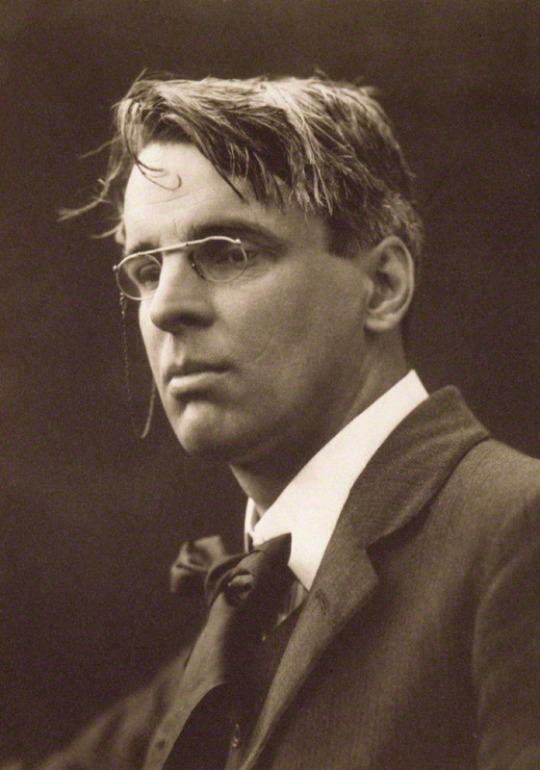
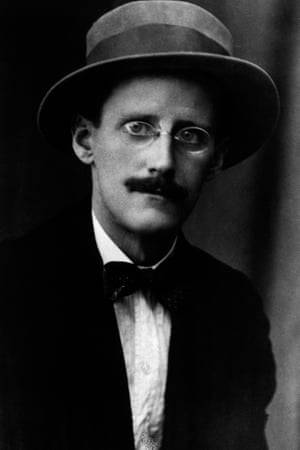
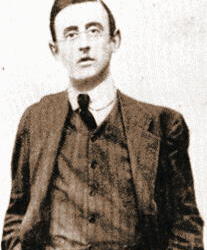
The Look
it's the spectacles and the melancholy gaze and the slightly disheveled air, and in some cases a very large hat
73 notes
·
View notes
Text

“Father, I am very happy. I am dying for the glory of God and the honor of Ireland.” - Joseph Mary Plunkett. Poet, Nationalist, Republican, Journalist, member of the IRB and the Irish Volunteers, signatory of an Poblacht na hÉireann, Husband of Grace Evelyn Gifford and One of the 16 executed rebels of the 1916 Easter Rising
#irish#gaeilge#irish language#ireland#easter rising#1916 easter rising#poblacht na hÉireann#Irish Republic#IRB#irish volunteers#Joseph Mary Plunkett#Grace Gifford#1916 proclamation#irish rebellion#irish quotes
5 notes
·
View notes
Text
#OTD in 1887 – Birth of Irish patriot and poet, Joseph Mary Plunkett, in Dublin.
Joseph Plunkett, one of the leaders of the 1916 rising and a signatory of the Proclamation is born into a privileged background. His father was a Papal Count.
A gifted writer, he met Thomas MacDonagh when he was tutored by him in Irish in preparation for the University College, Dublin, matriculation examinations. MacDonagh was to become a close friend, as both were interested in poetry, religion…
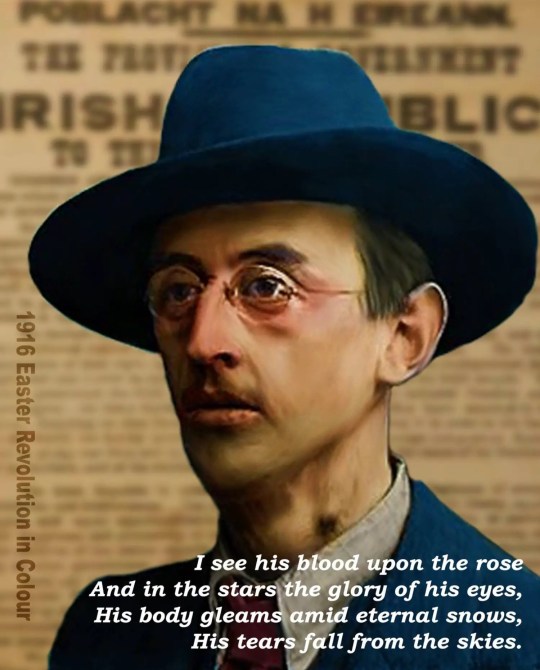
View On WordPress
#1916 Easter Revolution in Colour#1916 Easter Rising#Arthur Griffith#Co. Kildare#Curragh Camp#GPO#Grace Gifford#Irish Republican Brotherhood#Irish Volunteers#James Connolly#Joseph Mary Plunkett#Plunkett barracks#Proclamation#Roger Casement#Séan Mac Diarmada#Signatory#Sinn Fein#Thomas MacDonagh#Waterford city railway station
9 notes
·
View notes
Text
will any Irish song hit as hard as Grace? no

#irish#ireland#irish music#1916#joseph mary plunkett#so sad#it honestly hurts my heart#im listening now#like... this is our history literally fighting to live from the english and they executed us#and they have the audacity to call brexit getting freedom and they have no fucking awareness of their horrific impact#or they just dont fucking care#so idk about individuals as a people we’ll always hate the english for what they did#and i’ll always be sickened by their love of the royals like theyre some cute quirky thing#and when it comes to history so many ppl insee speak on it are just so fucking stupid#im actually so pissed lmao#fuck them fuck them fuck them#we arent even free of them bc we dont have the north#brb gonna go back and fight in 1916
2 notes
·
View notes
Text
I see His blood upon the rose, and in the stars the glory of His eyes; His body gleams amid eternal snows, His tears fall from the skies. I see His face in every flower; the thunder and the singing of the birds are but His voice— and carven by His power, rocks are His written words. All pathways by His feet are worn, His strong heart stirs the ever-beating sea, His crown of thorns is twined with every thorn, His cross is every tree.
Joseph Mary Plunkett; I See His Blood Upon The Rose
1 note
·
View note
Text

GOOD AFTERNOON I AM CRYING IN THE CLUB RIGHT NOW
(Pictured, Grace Plunkett in the arms of Joseph Plunkett, her head is on his shoulder, Joseph “Mary” Plunkett is seen standing in uniform with his arms around his wife, minutes later he would be shot dead - 1916, Dublin)
#yes this is the grace the song of the same name is about#i cant find one without a watermark sorry#irish history#1916 easter rising#easter rising#ireland#joseph mary plunkett#joseph plunkett#grace
12 notes
·
View notes
Text
Poetry Saturday—I See His Blood Upon The Rose
Poetry Saturday—I See His Blood Upon The Rose
I see His blood upon the rose And in the stars the glory of His eyes, His body gleams amid eternal snows, His tears fall from the skies.
I see His face in every flower; The thunder and the singing of the birds Are but His voice—and carven by His power Rocks are His written words.
All pathways by His feet are worn, His strong heart stirs the ever-beating sea, His crown of thorns is twined with…
View On WordPress
#Creation#Creator#Cross#God&039;s glory#God&039;s power#Jesus#Joseph Mary Plunkett#poem#poetry#Savior
7 notes
·
View notes
Photo

Sketchbook diary of a visit to Kilmainham Gaol. The story of Joseph Plunkett and Grace Gifford is heartbreaking and Grace is one of my favourite songs so it was very poignant getting to see where it all happened.
#irish history#sketchbook diary#sketchbook journal#Joseph Mary Plunkett#Grace Gifford#Easter rising#Dublin#kilmainham gaol
9 notes
·
View notes
Text
Those Executed For Involvement In the Irish Easter Rising in 1916

Francis Sheehy-Skeffington (died age 37)
Sheehy-Skeffington tried to organise a citizen police force to stop looting on the Tuesday of the Rising. Heading home, he was arrested in for no reason by British troops. Capt JC Bowen-Colthurst used him as a hostage while attacking the shop of Alderman James Kelly, at the top of Camden Street. Bowen-Colthurst destroyed the shop with grenades, and shot dead a 17-year-old boy before marching Sheehy-Skeffington and two journalists to Portobello Barracks. The next morning, they unaware they were going to be shot to death until moments before it occurred. They were executed the next morning on April 26th, 1916. Those involved attempted to cover up what they did.

Thomas “Tom” Clarke (died age 58)
Clarke was stationed at headquarters in the General Post Office during the Easter Week. Clarke wrote on the wall of the house after surrender on April 29th, "We had to evacuate the GPO. The boys put up a grand fight, and that fight will save the soul of Ireland." He was arrested after the surrender. He and other rebels were taken to the Rotunda where he was stripped of his clothing in front of the other prisoners. He was later held in Kilmainham Gaol. He was court-martialled and sentenced to death. Before his execution, he asked his wife Kathleen to give this message to the Irish People:
"My comrades and I believe we have struck the first successful blow for freedom, and so sure as we are going out this morning so sure will freedom come as a direct result of our action . . . In this belief, we die happy."
He was then executed by firing squad on May 3rd, 1916.

Patrick Pearse (died age 36)
Easter Monday, April 24th 1916, it was Pearse who read the Proclamation of the Irish Republic from outside the General Post Office, the headquarters of the Rising. Pearse was the person most responsible for drafting the Proclamation, and he was chosen as President of the Republic. Six days after he issued the order to surrender. He was court-martialled and executed by firing squad on may 3rd, 1916. He was said to be whistling as he came out of his cell to be killed. The day before his death he wrote:
"When I was a child of ten I went down on my bare knees by my bedside one night and promised God that I should devote my life to an effort to free my country. I have kept that promise. As a boy and as a man I have worked for Irish freedom. The time, as it seemed to me, did come, and we went into the fight. I am glad we did. We seem to have lost. We have not lost. To refuse to fight would have been to lose, to fight is to win. We have kept faith with the past and handed on a tradition to the future."

Thomas MacDonagh (died age 37)
MacDonagh's battalion was stationed at Jacob's Biscuit Factory. Despite MacDonagh's rank and the fact that he commanded one of the strongest battalions, they saw little fighting. MacDonagh received the order to surrender on April 30th, though his battalion was prepared to continue. Following the surrender, MacDonagh was court martialled, and executed by firing squad on May 3rd, 1916. In his last message to the Irish people he wrote:
"I, Thomas MacDonagh, having now heard the sentence of the Court Martial held on me today, declare that in all my acts, all the acts for which I have been arraigned. I have been actuated by one motive only, the love of my country, and the desire to make her a sovereign, independent state."

Joseph Mary Plunkett (died age 28)
Following the surrender Plunkett was held in Kilmainham Gaol, and faced court martial. Seven hours before his execution, he was married in the prison chapel to his sweetheart Grace Gifford, a Protestant convert to Catholicism, whose sister, Muriel, had years before also converted and married his best friend Thomas MacDonagh, who was also executed for his role in the Easter Rising. Grace never married again after his death on May 4th, 1816. Days before his sentence Plunkett had written in a letter to Grace:
"Listen--if I live it might be possible to get the Church to marry us by proxy- there is such a thing but it is very difficult I am told. Father Sherwin might be able to do it. You know how I love you. That is all I have time to say. I know you love me and I am very happy."

Edward “Ned” Daly (died age 25)
Daly's battalion, stationed in the Four Courts and areas to the west and north of the centre of Dublin, saw the most harsh fighting of the rising. He was forced to surrender his battalion on April 29th by Patrick Pearse. He was executed by firing squad on May 4th 1916. Men in his battalion spoke of him as a good leader.

Michael O’Hanrahan (died age 38)
O’Hanrahan was second in command of Dublin's 2nd battalion under Commandant Thomas MacDonagh. He fought at Jacob's Biscuit Factory, though the battalion saw little action other than intense sniping throughout Easter week. O'Hanrahan was executed by firing squad on May 4th 1916 at Kilmainham Jail. His brother, Henry O'Hanrahan, was sentenced to penal servitude for life for his role in the Easter Rising.

William “Willie” Pearse (died age 34)
Willie followed his brother into the Irish Volunteers and the Republican movement. He took part in the Easter Rising in 1916, always staying by his brother's side at the General Post Office. Following the surrender he was court-martialled and sentenced to be executed. It has been said that as he was only a minor player in the struggle it was his surname that condemned him. However, at his court martial he rather exaggerating his involvement. On May 3rd, William was granted permission to visit his brother in Kilmainham Gaol and to see him for the final time. While Willie was en route, Patrick was executed first and they never saw one another again. Willie was executed on May 4th, 1916.

John MacBride (died age 47)
In 1905 MacBride joined other Irish nationalists in preparing for an insurrection. Because he was so well known to the British, the leaders thought it wise to keep him outside their secret military group planning a Rising. He was in Dublin early on Easter Monday morning to meet his brother Dr. Anthony MacBride, who was arriving from Westport to be married on the Wednesday. The Major walked up Grafton St and saw Thomas MacDonagh in uniform and leading his troops. He offered his services and was appointed second-in-command at the Jacob's factory. After the Rising, MacBride, following a court martial under the Defence of the Realm Act, was shot by British troops in Kilmainham Gaol, Dublin.
He was executed on May 5th 1916, two days before his forty-eighth birthday. Facing the British firing squad, he said he did not wish to be blindfolded, saying:
"I have looked down the muzzles of too many guns in the South African war to fear death and now please carry out your sentence."
He is buried in the cemetery at Arbour Hill Prison in Dublin.
Executed two days before his 54th birthday on May 5th.

Éamonn Ceannt (died age 34)
After the unconditional surrender of the 1916 fighters, Eamonn Ceannt was detained. While Ceannt was being picked for trial, volunteer James Couhlan remembers him being determined in looking after the welfare of “the humblest of those who had served under him”. Ceannt was tried under court martial as demanded by General Maxwell. May 2nd, Ceannt was sent to Kilmainham Gaol to face trial and execution.
Written a few hours before his execution from cell 88 in Kilmainham Gaol, he wrote:
“I leave for the guidance of other Irish Revolutionaries who may tread the path which I have trod this advice, never to treat with the enemy, never to surrender at his mercy, but to fight to a finish...Ireland has shown she is a nation. This generation can claim to have raised sons as brave as any that went before. And in the years to come Ireland will honour those who risked all for her honour at Easter 1916.”
Ceannt was held in Kilmainham Gaol until his execution by firing squad on May 8th 1916. He is buried at Arbour Hill.

Michael Mallin (died age 41)
When Connolly was inducted into the Irish Republican Brotherhood in January 1916. On Easter Monday Mallin departed from Liberty Hall at 11:30am to take up his post at St Stephen's Green with his small force of ICA men and women. Upon arriving at the park they evacuated it, dug trenches, erected kitchen and first aid stations, and constructed barricades in the surrounding streets. Mallin planned to occupy the Shelbourne Hotel, located on the north-east side of the park, but insufficient troops prevented him from doing so. The next morning under intense machine gun fire Mallin ordered his troops to retreat to the Royal College of Surgeons on the west side of the park. The garrison remained in the barricaded building for the remainder of the week.
Mallin surrendered on April 30th 1916. The garrison was taken first to Dublin Castle then to Richmond Barracks, where Mallin was separated for court-martial. At his court-martial he downplayed his involvement. In his statement, Mallin stated:
“I had no commission whatever in the Citizen Army. I was never taken into the confidence of James Connolly. I was under the impression that we were going out for manoeuvres on Sunday . . . Shortly after my arrival at St Stephen's Green the firing started and Countess Markievicz ordered me to take command of the men as I had been so long associated with them. I felt I could not leave them and from that time I joined the rebellion."
Mallin was found guilty and transported to Kilmainham Gaol for his execution. He was executed May 8th 1916. The night before his execution he was visited in his cell by his mother, three of his siblings, his pregnant wife and their four children. In his last letter to his wife, who was pregnant with their fifth child, Mallin said:
"I find no fault with the soldiers or the police [I ask you] to pray for all the souls who fell in this fight, Irish and English . . . so must Irishmen pay for trying to make Ireland a free nation."
He wrote to his children:
“Una my little one be a Nun Joseph my little man be a Priest if you can James & John to you the care of your mother make yourselves good strong men for her sake and remember Ireland”
His funeral mass took place at the Dominican Church in Tallaght on May 13th, 1917. People from the procession clashed with police outside the church with two policemen injured.
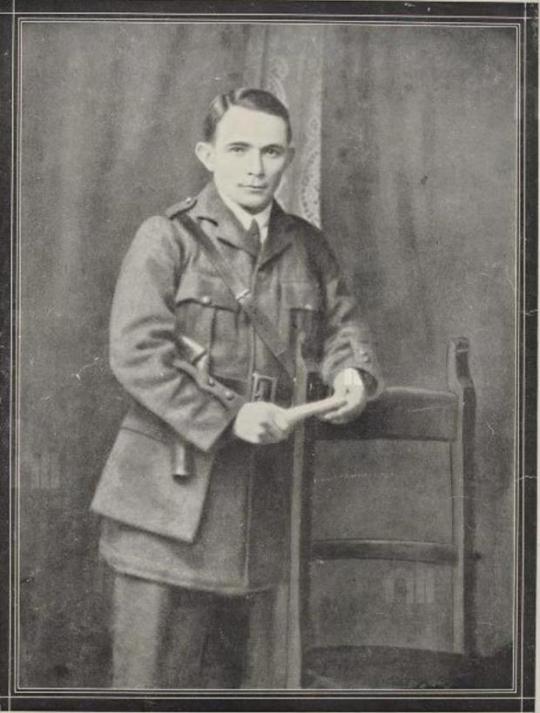
Con Colbert (died age 37)
In the weeks leading up to the Rising, he acted as bodyguard for Thomas Clarke. During Easter Week, he fought at Watkin's Brewery, Jameson's Distillery and Marrowbone Lane. They were marched to Richmond Barracks after surrender, where Colbert would later be court-martialled. Transferred to Kilmainham Gaol, he was told on Sunday May 7th he was to be shot the following morning. He wrote no fewer than ten letters during his time in prison. During this time in detention, he did not allow any visits from his family; writing to his sister, he said a visit "would grieve us both too much".
The night before his execution he sent for Mrs. Ó Murchadha who was also being held prisoner. He told her he was "proud to die for such a cause. I will be passing away at the dawning of the day." Holding his bible, he told her he was leaving it to his sister. He handed her three buttons from his volunteer uniform, telling her "They left me nothing else," before asking her when she heard the volleys of shots in the morning for Éamonn Ceannt, Michael Mallin and himself would she say a Hail Mary for the souls of the departed. The soldier who was guarding the prisoner began crying according to Mrs. Ó Murchadha, and recorded him saying "If only we could die such deaths."
Colbert was shot by firing squad the next morning on May 8th 1916.

Sean Heuston (died age 25)
Heuston was the Officer Commanding of the Volunteers in the Mendicity Institution on the south side of Dublin city. Heuston was to hold this position for three or four hours, to delay the advance of British troops. This delay was necessary to give the headquarters staff time to prepare their defences. Heuston was arrested after the surrender and transferred to Richmond Barracks. O May 4th 1916, he was tried by court martial. May 7th 1916, the verdict of the court martial was communicated to him that he had been sentenced to death and was to be shot at dawn the following morning.
Prior to his execution he was attended by Father Albert in his final hours. Father Albert wrote an account of those hours up to and including the execution:
“…We were now told to be ready. I had a small cross in my hand, and though blindfolded, Seán bent his head and kissed the Crucifix; this was the last thing his lips touched in life. He then whispered to me: ‘Father, sure you won’t forget to anoint me?’ I had told him in his cell that I would anoint him when he was shot. We now proceeded towards the yard where the execution was to take place; my left arm was linked in his right, while the British soldier who had handcuffed and blindfolded him walked on his left. As we walked slowly along we repeated most of the prayers that we had been saying in the cell. On our way we passed a group of soldiers; these I afterwards learned were awaiting Commandant Mallin; who was following us. Having reached a second yard I saw there another group of military armed with rifles. Some of these were standing, and some sitting or kneeling. A soldier directed Seán and myself to a corner of the yard, a short distance from the outer wall of the prison. Here there was a box (seemingly a soap box) and Sean was told to sit down upon it. He was perfectly calm, and said with me for the last time: ‘My Jesus, mercy.’ I scarcely had moved away a few yards when a volley went off, and this noble soldier of Irish Freedom fell dead. I rushed over to anoint him; his whole face seemed transformed and lit up with a grandeur and brightness that I had never before noticed.”
Father Albert concluded:
“Never did I realise that men could fight so bravely, and die so beautifully, and so fearlessly as did the Heroes of Easter Week. On the morning of Sean Heuston's death I would have given the world to have been in his place, he died in such a noble and sacred cause, and went forth to meet his Divine Saviour with such grand Christian sentiments of trust, confidence and love.”

Thomas Kent (died age 50)
During the Easter Rising, the Kent residence was raided in a gunfight lasted for four hours. Eventually the Kents were forced to surrender. Thomas and William was tried by court martial on the charge of armed rebellion. His brother was acquitted, but Thomas was sentenced to death and executed by firing squad in Cork on May 9th 1916. He was buried in the grounds of Cork Prison.
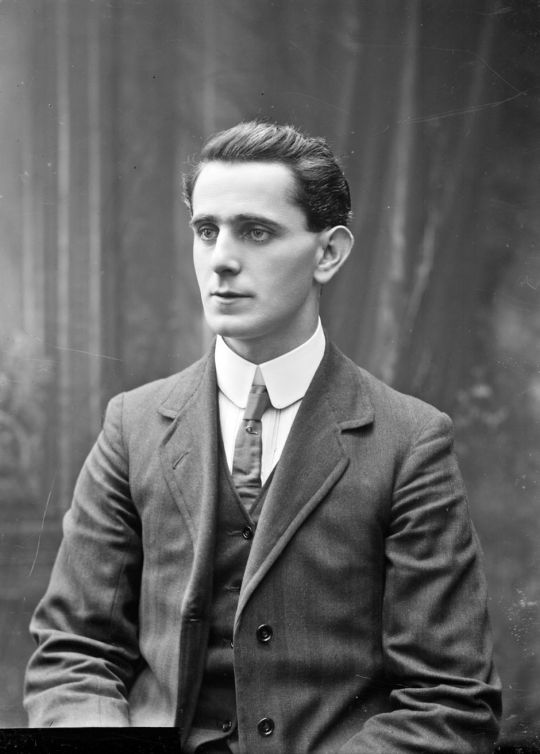
Sean Mac Diarmada (died age 33)
September 1915, he joined the secret Military Committee of the IRB. In 1914 he said:
"the Irish patriotic spirit will die forever unless a blood sacrifice is made in the next few years.”
Due to his disability, Mac Diarmada took little part in the fighting of Easter week, but was stationed at the headquarters in the General Post Office. Following the surrender, he nearly escaped execution by blending in with the large body of prisoners. He was eventually recognised by Daniel Hoey of G Division. Following a court-martial on May 9th, Mac Diarmada was executed by firing squad on May 12th. In his final letter he wrote:
"Miss Ryan, she who in all probability, had I lived, would have been my wife".
She and her sister, Phyllis also visited Kilmainham Gaol before his execution. Before his execution, Mac Diarmada wrote:
"I feel happiness the like of which I have never experienced. I die that the Irish nation might live!”
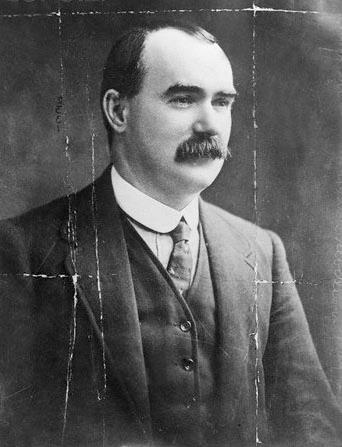
James Connolly (died age 47)
Connolly considered the rest of the leaders too bourgeois and unconcerned with Ireland's economic independence. During the Easter Rising, Connolly was Commandant of the Dublin Brigade and was de facto commander-in-chief. Following the surrender, he said to other prisoners:
"Don't worry. Those of us that signed the proclamation will be shot. But the rest of you will be set free."
Connolly was not held in gaol, but in a room at the State Apartments in Dublin Castle, which had been converted to a first-aid station for troops recovering from the war. Connolly was sentenced to death by firing squad for his part in the rising. On May 12th 1916 he was taken by military ambulance to Royal Hospital Kilmainham, across the road from Kilmainham Gaol, and from there taken to the gaol, where he was to be executed. Visited by his wife, and asking about public opinion, he commented:
"They will all forget that I am; an Irishman."
Connolly had been so badly injured from the fighting but the execution order was still given and he was unable to stand before the firing squad; he was carried to a prison courtyard on a stretcher. His absolution and last rites were administered by a Capuchin, Father Aloysius Travers. Asked to pray for the soldiers about to shoot him, he said:
"I will say a prayer for all men who do their duty according to their lights."
Instead of being marched to the same spot where the others had been executed, at the far end of the execution yard, he was tied to a chair and then shot. His body (with other leaders) was put in a mass grave without a coffin. The executions of the rebel leaders deeply angered the majority of the Irish population, most of whom had shown no support during the rebellion.

Sir Roger Casement (died age 51)
October 1914, Casement sailed for Germany via Norway. Casement spent most of his time in Germany seeking to recruit an Irish Brigade from among more than 2,000 Irish prisoners-of-war taken in the early months of the war and held in the prison camp of Limburg an der Lahn. His plan was that they would be trained to fight against Britain in the cause of Irish independence. Casement did not learn about the Easter Rising until after the plan was fully developed. The German weapons never landed in Ireland; the Royal Navy intercepted the ship transporting them.
Casement departed Germany in a submarine. In the early hours of April 21st 1916, three days before the rising began, the German submarine put Casement ashore. Suffering from a recurrence of the malaria, and too weak to travel, he was discovered at McKenna's Fort and arrested on charges of treason, sabotage and espionage against the Crown.
"He was taken to Brixton Prison to be placed under special observation for fear of an attempt of suicide. There was no staff at the Tower [of London] to guard suicidal cases."
At Casement's highly publicised trial for treason, the prosecution had trouble arguing its case. Casement's crimes had been carried out in Germany. During the trial, Casement’s personal diary detailed his homosexual encounters was uncovered. The British government circulated fake reports to portray Casement as a sexual deviant. Casement tried to appeal the violation of his human rights and against his conviction and death sentence. On the day of his execution, Casement was received into the Catholic Church at his request. He was attended by two Catholic priests. One said of Casement that he was:
"a saint… we should be praying to him [Casement] instead of for him".
Casement was hanged at Pentonville Prison in London on August 3rd 1916. His last word was “Ireland”.
#irish history#history#irish rebellion 1916#eastern rising#Francis Sheehy-Skeffington#thomas clarke#tom clarke#Patrick Pearse#Thomas MacDonagh#Joseph Mary Plunkett#Sir Roger Casement#joseph plunkett#roger casement#James Connolly#Sean Mac Diarmada#Thomas Kent#Sean Heuston#Con Colbert#Michael Mallin#Éamonn Ceannt#John MacBride#William Pearse#willie pearse#Edward daly#ned daly#Michael O’Hanrahan
515 notes
·
View notes